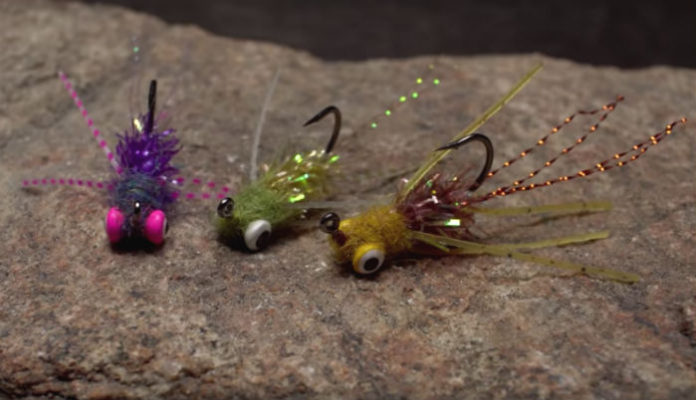Paul Beel is an angler, fly tier, and writer from Indiana who runs a cool website called Frankenfly. Last fall, he announced the development of a great new warmwater pattern designed for those times when catching big bluegills is not easy at all. Here’s how he describes his reason for creating the fly and offers tips for fishing it:
I designed the Bluegill Belly Bean for late summer time when the bluegill are no longer on their beds and usually stay deep in the water. You can get the Bluegill Belly Bean down to find them and get their attention. Cast it out and countdown and let it sink. How long to count down depends on how deep the body of water is you are fishing or where the bluegill are holding. But I would say 10 or 15 seconds is a good start. Sometimes you might be able to just give it a twitch and the bluegill will take it. Other times you might just have to leave it sitting still or you may have to strip it and get it moving before they will strike. You just have to try different tactics to see what they like on that particular day. Normally they are not as easy to catch when they are not guarding their beds.
In this week’s excellent video from Tim Flagler of Tightline Productions walks you through the process of tying Beel’s creation. Of course, he serves up some great tricks for controlling the materials on the hook and organizing everything so the fly turns out looking very buggy and attractive. As always, watch these videos in 4K for maximum effect.
Bluegill Belly Bean
Hook: 60-degree heavy jig hook (here, a Daiichi 4640), size 6.
Thread: Light-olive, 8/0 or 70-denier.
Eyes: Double Pupil Lead Eyes, x-small.
Tails #1: Root beer Krystal Flash.
Tail #2: Olive barred clear Chicone’s Micro Crusher Legs.
Body: Opal olive Estaz, petite.
Legs: Chicone’s Barred Micro Crusher Legs.
Head: Light olive Frankendub.
Tools: Post-It pad.
Credit: Source link































